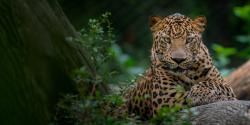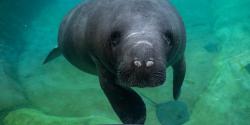The playful North American river otter is the most abundant otter species, but it wasn’t always that way.
Water pollution, uncontrolled trapping, and severe habitat loss resulted in regional extirpation (elimination) throughout the Midwest and eastern United States. However, river otter populations are recovering in some areas through reintroduction projects and conservation initiatives.
River otters are considered an indicator species. As a top predator, their presence reflects the health of the ecosystem around them. Where you find river otters, you will find quality freshwater systems.
Scientific Name: Lontra canadensis
Conservation Status: Least Concern
Size: Length from nose to tail tip averages about 40 inches.
Weight: Average of 18 pounds













